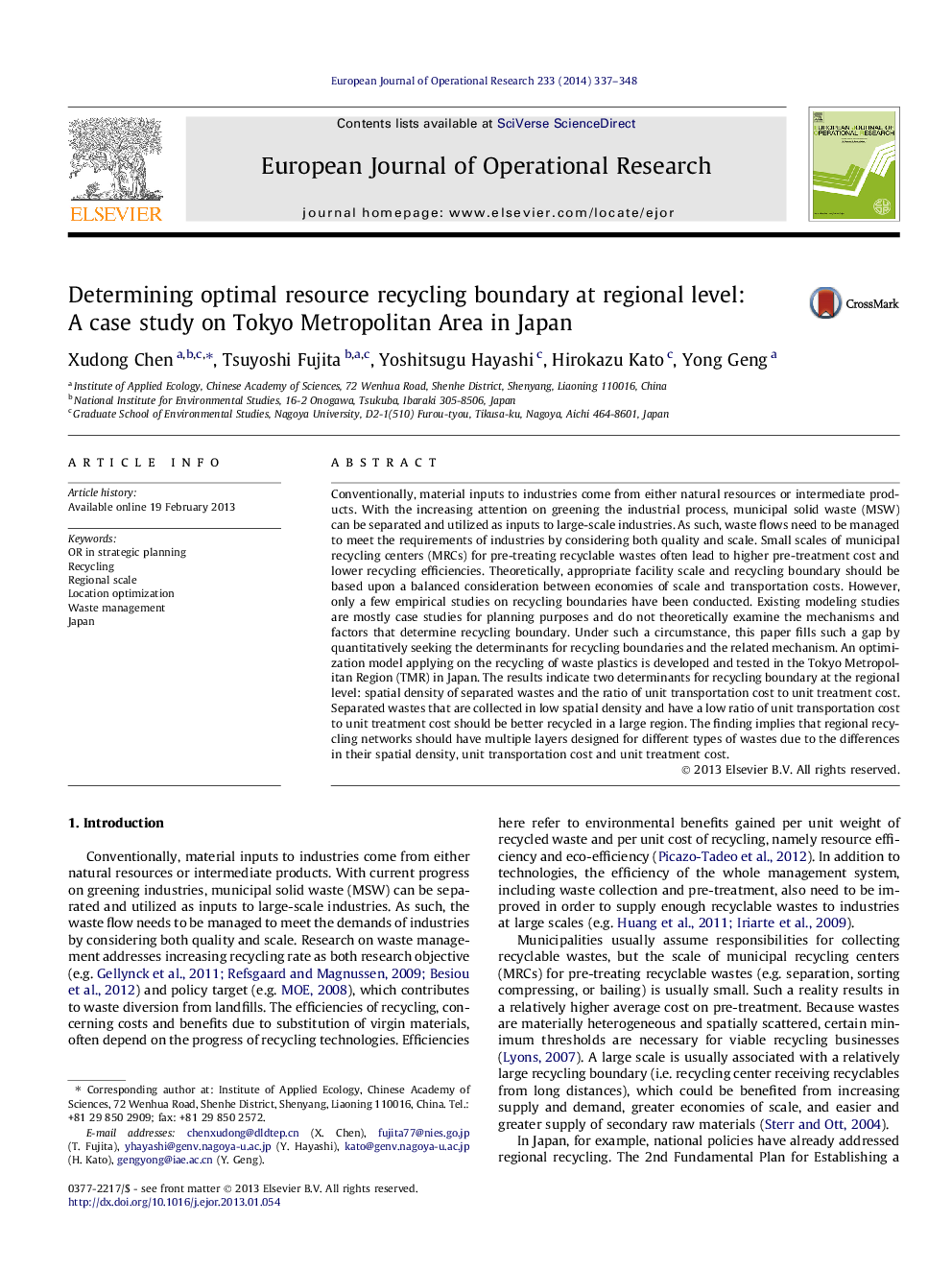| Article ID | Journal | Published Year | Pages | File Type |
|---|---|---|---|---|
| 481209 | European Journal of Operational Research | 2014 | 12 Pages |
Conventionally, material inputs to industries come from either natural resources or intermediate products. With the increasing attention on greening the industrial process, municipal solid waste (MSW) can be separated and utilized as inputs to large-scale industries. As such, waste flows need to be managed to meet the requirements of industries by considering both quality and scale. Small scales of municipal recycling centers (MRCs) for pre-treating recyclable wastes often lead to higher pre-treatment cost and lower recycling efficiencies. Theoretically, appropriate facility scale and recycling boundary should be based upon a balanced consideration between economies of scale and transportation costs. However, only a few empirical studies on recycling boundaries have been conducted. Existing modeling studies are mostly case studies for planning purposes and do not theoretically examine the mechanisms and factors that determine recycling boundary. Under such a circumstance, this paper fills such a gap by quantitatively seeking the determinants for recycling boundaries and the related mechanism. An optimization model applying on the recycling of waste plastics is developed and tested in the Tokyo Metropolitan Region (TMR) in Japan. The results indicate two determinants for recycling boundary at the regional level: spatial density of separated wastes and the ratio of unit transportation cost to unit treatment cost. Separated wastes that are collected in low spatial density and have a low ratio of unit transportation cost to unit treatment cost should be better recycled in a large region. The finding implies that regional recycling networks should have multiple layers designed for different types of wastes due to the differences in their spatial density, unit transportation cost and unit treatment cost.
• Recycling boundaries are determined by characteristics of wastes and recycling. • Determinants are density and the ratio of unit transportation cost to treatment costs. • Regional recycling networks should have multiple layers.
